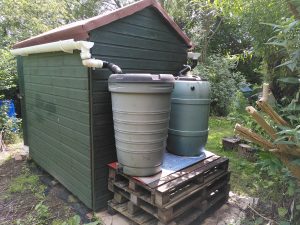
At a recent community fair at the Langney Community Centre, at which the Eastbourne Food Partnership ran a community engagement stall with regards to the new community garden being developed outside the centre, I chatted with Martin Hills, the gardener employed part-time by the centre to help design and develop the community garden on land owned by Eastbourne Borough Council. Martin is a qualified permaculture designer and is applying his knowledge of permaculture design principles to help design the community garden, which is about 0.75 acres in size. As he says in his garden plan: “The aim is for a thriving, self-sustaining ecosystem that meets the needs of its inhabitants – including human. To this end, it will be a place where people want to be, a place of beauty, a place that appeals to all the senses, a place where some human food can be grown, a place to play, a place to sit and quietly reflect, a place to connect with Nature”.


As the garden design incorporates vegetable beds already partly prepared, and an orchard already under development, as well as a forest garden that would contain plants that can be foraged, I asked Martin about how the food growing systems in the garden would cope with the extreme weather events now more frequently occurring as climate change accelerates. He replied that the key is diversity of planting and designing in resilience to the garden. The greater the diversity of food crops and plants grown within the garden, the more likely that there would be some crops in any year that would survive extreme weather events, even if other crops failed in that year, something that would have to be expected and accepted to some extent as climate change progresses. Increasing the chance of survivability would be made possible by the extensive use of no-dig methods, deep-rooting plants (especially perennials), and cover-mulching (with compost and humus produced on-site) to protect the stability and quality of the soil as well as ensuring enough drainage to prevent the soil from either drying out too much or becoming too wet. The site is on a slope, and elevated above the Eastbourne floodplain, so it does not suffer the kind of extensive flooding during extreme rainfall events that, for example, some of the allotments sites in the lower part of town do.

The addition of forest gardening principles within the garden also helps as it increases biological sustainability and plant diversity, attracts pollinators and other beneficial wildlife, helps keep pests and diseases under control, and provides leaf litter, leading to increased nutrient resistance and drought resistance (particularly useful given that Eastbourne is in a water-stressed area and increasingly severe droughts are a feature of climate change in the south east of England). This helps to ensure the garden can flourish without large amounts of watering. The other useful feature of forest gardens is that they also allow for continual food output without annual tilling, pesticides, fertilisers, or other high inputs of chemicals or energy. Another good example of how a forest garden works can be seen at the Pevensey & Westham Community Forest Garden, a very short distance away from Langney.

The community garden already has an abundance of mature trees around the edges, including a magnificent copper beech tree providing valuable cool shade. There are also some new tree saplings planted by Treebourne, which will provide valuable shade along the side of the garden next to the road. Trees help protect young crops by providing wind-shelter against winter storms and cooling shade during summer heatwaves, invaluable as the UK now experiences warmer, wetter winters and hotter, drier summers.
Martin explained that, as the community garden develops, whatever surplus food is produced by it will be directed to the foodbank and community larder hosted by the Langney Community Centre each week, helping to ensure that there is a regular, fresh supply of healthy organic fruit, nuts, and vegetables to supplement surplus food brought in from elsewhere. This will help to build local food security and food resilience in Langney, one of the relatively more deprived areas of Eastbourne, and this is so important given that national and international food supply chains are increasingly coming under stress due to the impacts of climate change.

The creation of a large, circular lawn in the centre of the garden would facilitate outdoor community gatherings as well as workshops to educate local people about matters such as foraging, crop processing, plant identification, etc. The Langney Community Centre is keen to facilitate this education, as evidenced by the explanatory signs in the Edible Garden already developed on a small patch of land immediately in front of the centre and maintained by a keen band of volunteers.

Martin’s top tip for growers is to avoid digging the soil as much as possible, as digging disturbs the soil life that is essential for good plant growth and efficient drainage.




